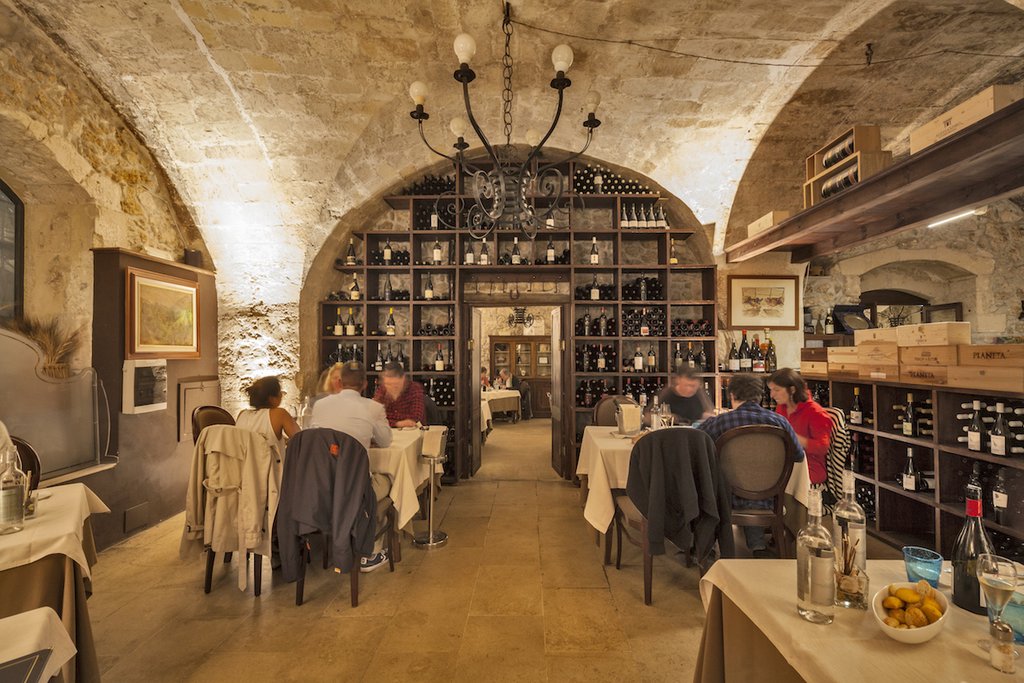
In Sicily, culinary tradition is a unique mix of flavors from the Greeks, Arabs, and Normans who once called this island home. Dynamic food experiences reach far beyond Sicily’s famed eggplant specialty, caponata. To give you a glimpse of Sicily’s food culture, we share a few less-talked-about (but equally important) signature dishes—paired with a list of restaurants locals swear by.
## #1 The Exquisite Pasta with Sardines: A Culinary Journey Through Taormina & Noto
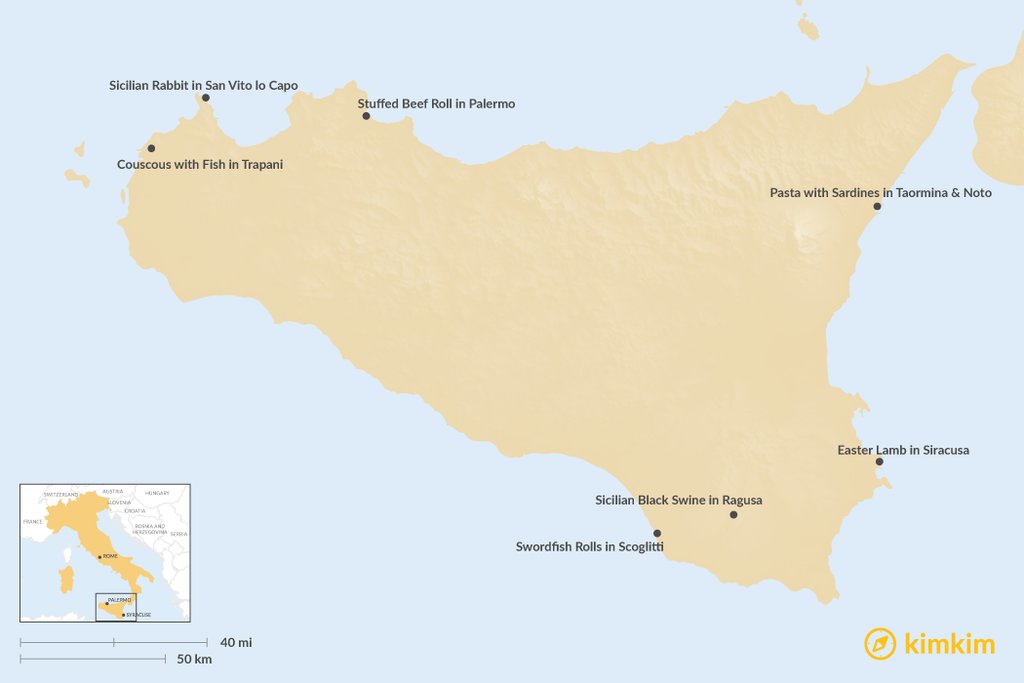
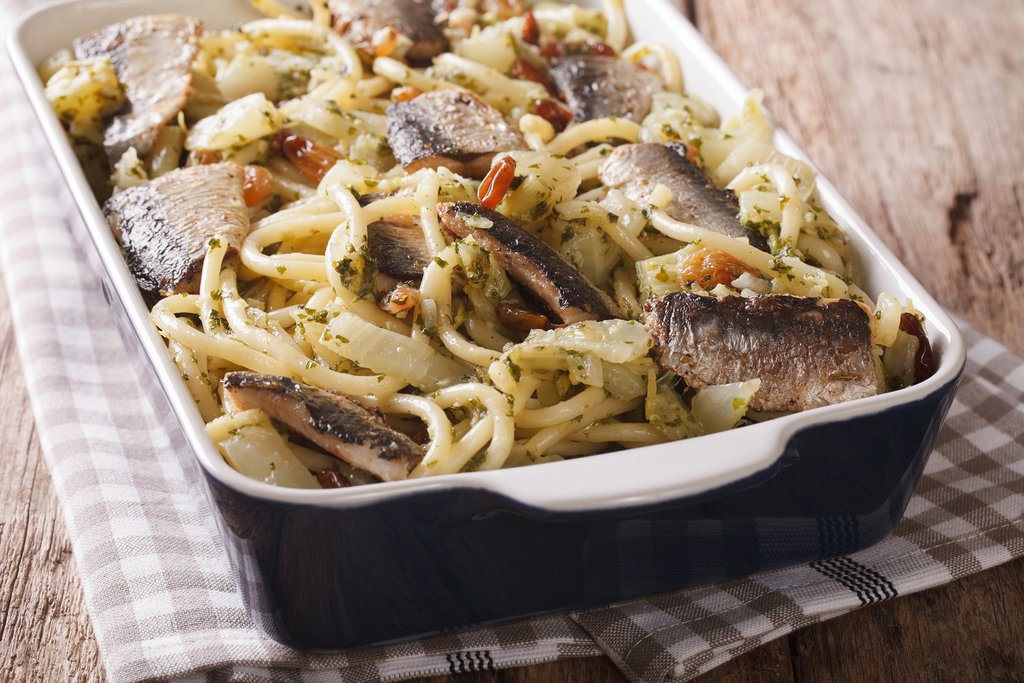
This iconic national dish stands as a testament to the Sicilian spirit of resourcefulness and innovation. The captivating story behind Pasta with Sardines begins in the 900s, when the Arabs first set foot on Sicilian soil. It is said that this now-classic sweet and sour combination of pasta, sardines, and the distinctly aromatic wild fennel, all infused with North African nuances of saffron, pine nuts, and dried fruit, emerged as a serendipitous creation. Imagine the scene: new arrivals, unfamiliar territory, and a drive to create something from what was available. The fusion of local ingredients with those carefully stored on their ships resulted in a culinary revelation, a “Eureka!” moment that would transcend the Arabs’ 250-year reign and forever become ingrained in Sicilian cuisine.
The dish has since become ubiquitous across the island, gracing menus in nearly every corner of Sicily. Each region, however, adds its own unique, personalized touch, adapting the recipe to reflect local tastes and ingredients. In cities like Taormina, for instance, the inclusion of tomatoes lends a vibrant acidity to the dish. Journey to the base of the majestic Iblean Mountains, and you’ll discover the charming town of Noto. Here, the Michelin-starred Ristorante Crocifisso elevates the dish to an unforgettable experience. Their recipe features a rustic casarecce pasta, perfectly complementing the fragrant saffron sauce. While the added ingredients may vary, one element remains constant: sardines. These silver darlings of the sea are an absolute must and can be prepared and presented in a myriad of ways.
For a truly immersive experience, consider participating in a cooking class led by a duchess in an opulent 18th-century palazzo. During this hands-on experience, you’ll have the opportunity to learn the art of rolling butterflied sardines sourced directly from the bustling Capo market. With expert guidance, you’ll create the peasant-fisherman favorite, sarde beccafico, a delightful preparation of sardines filled with seasoned breadcrumbs, dried fruit, and fresh herbs. This culinary adventure offers a glimpse into the heart of Sicilian culinary traditions and provides a deeper appreciation for the history and resourcefulness that have shaped the island’s cuisine.
## #2 The Hearty Stuffed Beef Roll of Palermo: A Taste of Tradition
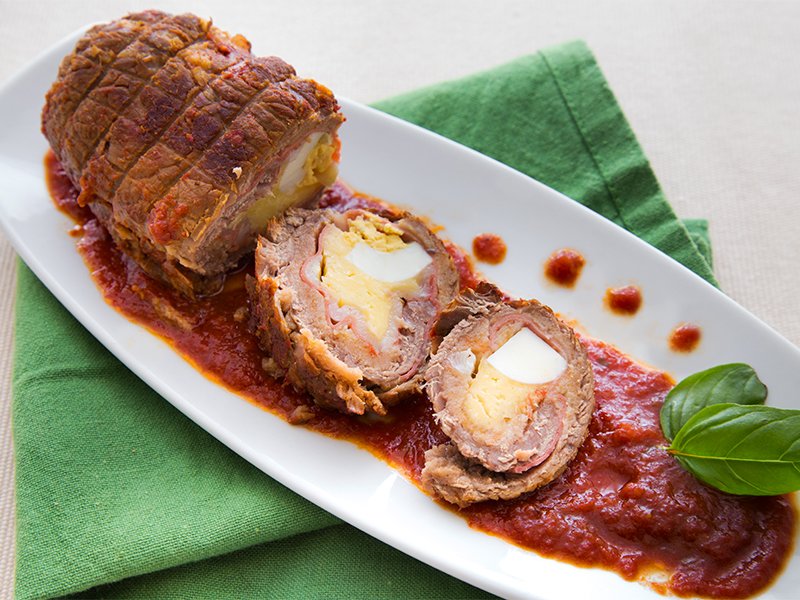
Among the pantheon of Sicilian culinary classics, one dish stands out for its heartiness and enduring appeal: the traditional beef or veal farsu magru. This dish is more than just a meal; it is a culinary narrative, a story told through layers of flavors and textures. A lean cut of meat, often beef or veal, is meticulously stuffed with a rich filling of minced meat or ham, savory breadcrumbs, an assortment of cheeses, aromatic spices, and hard-boiled eggs, then carefully rolled to resemble a substantial roast. This preparation is a testament to the ingenuity of Sicilian cooks, transforming humble ingredients into a feast fit for a celebration.
Ask the locals in Palermo, and they’ll invariably tell you that this time-honored recipe needs no improvement. It is a perfect example of tradition preserved, a culinary legacy passed down through generations. At the beloved old-school establishment, Trattoria Ai Cascinari, you’ll find the farsu magru prepared with unwavering adherence to tradition. Here, the emphasis is on authenticity, on delivering the flavors that have delighted diners for decades.
However, for those seeking a more contemporary interpretation of this classic dish, Salmoriglio offers a modern twist. This Palermo eatery boasts a youthful, vibrant atmosphere and prides itself on sourcing ingredients from traceable and certified Sicilian breeders. This commitment to quality extends to their farsu magru, where the emphasis is on showcasing the finest local products. On the menu, you’ll also discover Cinisara sausage, crafted from a unique breed of beef cattle originating from a province near Palermo, specifically adapted to withstand the intense heat of Sicily’s summers. This dedication to local ingredients and innovative culinary techniques makes Salmoriglio a must-visit for those seeking a modern Sicilian dining experience.
## #3 Sicilian Black Swine in Ragusa: A Culinary Renaissance
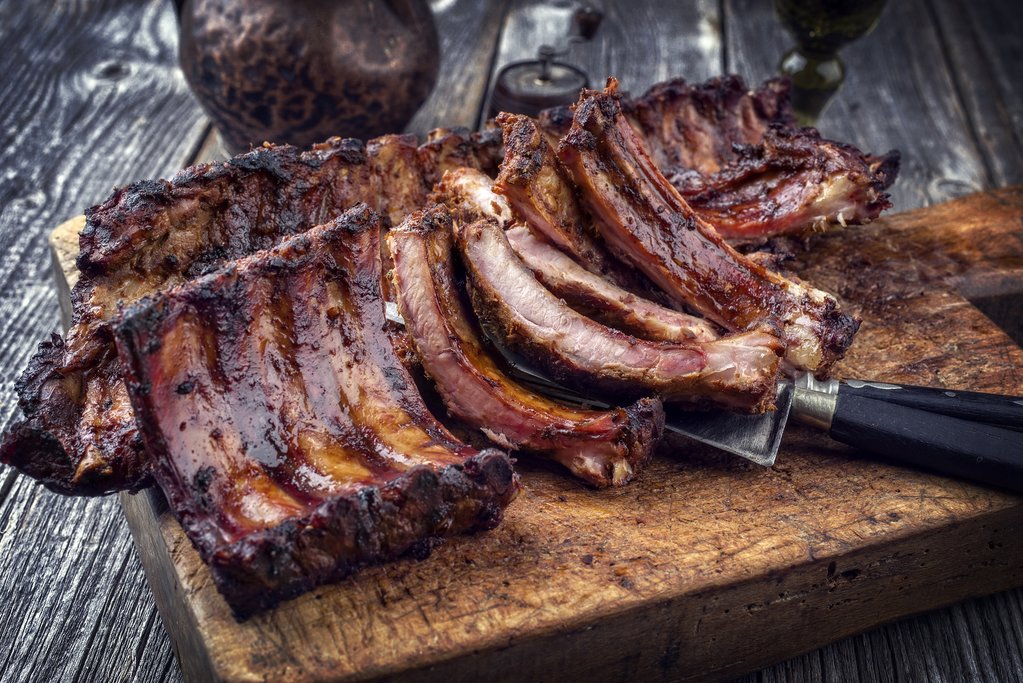
The story of Sicily’s indigenous black swine is a tale of near extinction and triumphant revival. Originating from the rugged Nebrodi Mountains in northeast Sicily, this unique breed faced the brink of oblivion until dedicated conservation efforts turned the tide. In 1993, Sicily took a decisive step towards protecting this heritage animal by designating just over 300 square miles (777 sq. km.) as a national park – now the island’s largest. This crucial decision provided a safe haven for the mailino nero, allowing its population to gradually recover.
Today, you can visit farms committed to raising these remarkable animals. Here, they roam freely in pastures dotted with acorns, olives, and carobs, creating a diet that contributes to the sausage’s extraordinary flavor profile. Since production is strictly regulated to maintain quality and preserve the breed’s heritage, this heritage meat has become an A-list item on gourmet menus and in the displays of elite butcher shops.
To experience the unparalleled flavor of Sicilian black pork without the associated price tag of upscale dining, consider a visit to I Banchi in Palazzo di Quattro, the sister establishment of the famed two-Michelin-star restaurant, Duomo, in Ragusa. Here, chef Ciccio Sultano showcases the versatility of this prized ingredient. Sample the Sicilian black pork served Chiaramonte style, where ribs are generously stuffed with garlic, onion, salami, tomato, parsley, oregano, bread crumbs, and just the right amount of Ragusa’s local cheese. This dish offers an authentic taste of Sicilian tradition and showcases the culinary potential of the rescued mailino nero.
## #4 Swordfish Rolls in Scoglitti: A Love Story on a Plate
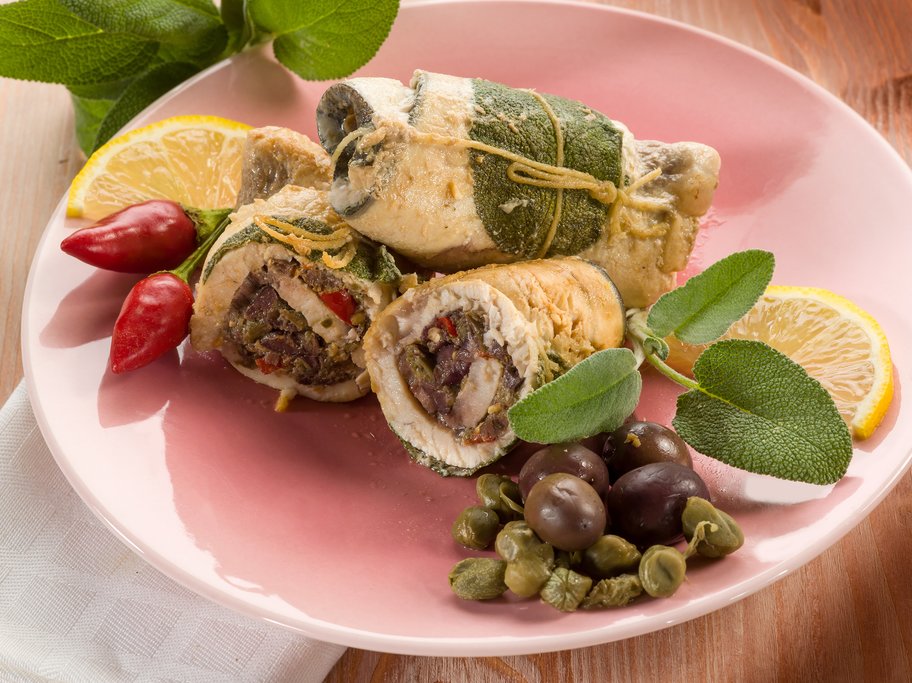
The tales woven around the swordfish rolls are almost as captivating as the dish itself. Pesce spada, or swordfish, are predominantly caught in the waters of the Strait of Messina, the Malta Channel, and the Sicilian Channel. Fishermen, working in pairs, dedicate their summers to the pursuit of these majestic deep-sea fish. Legend has it that the male swordfish refuses to leave the side of the female, even in the face of danger. This poignant love story has inspired countless songs and stories, adding a layer of emotional depth to the traditional dish.
The swordfish, carefully filleted, is rolled and stuffed with a medley of pine nuts, raisins, breadcrumbs, and anchovies – another of Sicily’s celebrated fish specialties. The resulting rolls are a delightful combination of textures and flavors, a testament to the island’s culinary artistry. You can discover this dish gracing the starter menus of almost every seafood restaurant on the island. However, many discerning food enthusiasts swear by the rendition regularly served at Viri Ku Cè in the charming coastal town of Scoglitti. Here, you’ll be treated to an assortment of whatever fresh catches were hauled in that very morning, guaranteeing an unparalleled level of freshness and flavor.
## #5 Easter Lamb in Siracusa: A Celebration of Spring and Tradition
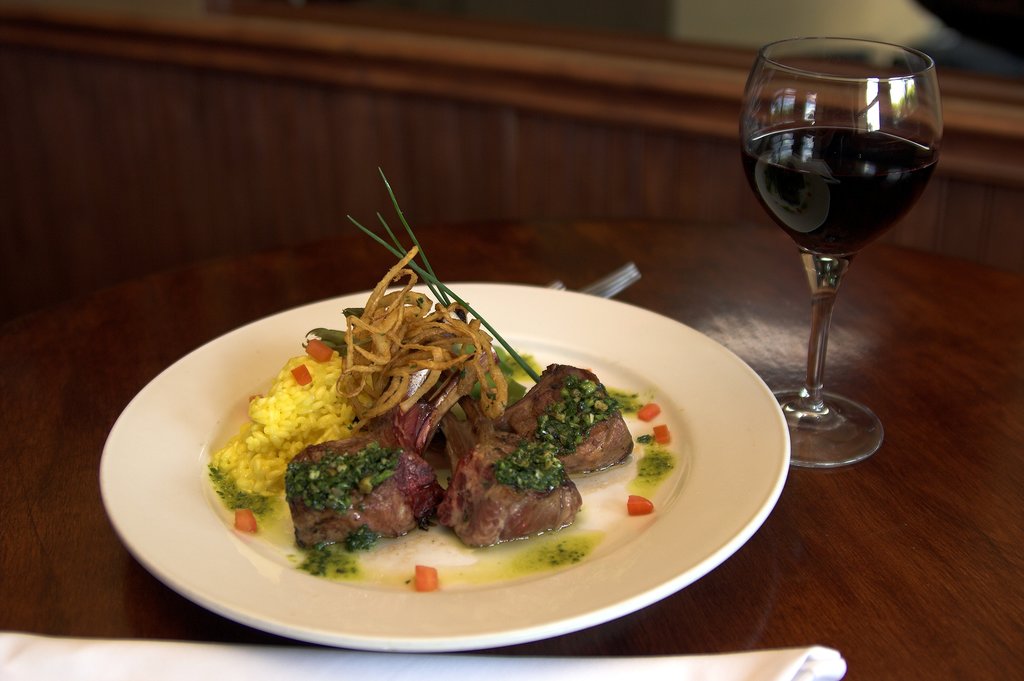
Lamb holds a prominent place in Sicilian cuisine year-round, but its significance intensifies during the Easter season. In Italy, this revered religious holiday unfolds over an entire week, marked by a series of deeply rooted traditions and festivities. The solemn procession of thousands of monks in Enna commemorates Good Friday, while Saturdays are filled with the joyous preparation and consumption of pupu cu l’ova, a festive bread baked with colorful eggs. Countless celebrations, both grand and intimate, take place in villages and towns across the island, each reflecting the unique character of its community.
Holy Week coincides with the arrival of spring equinox, a time of renewal and abundance. Favas, artichokes, and asparagus make their appearance, infusing the culinary landscape with vibrant flavors and aromas. It is also during this time of the year when lambs are born, making them the quintessential centerpiece of nearly every Sicilian Easter dinner table.
Even if you don’t have the good fortune of receiving an invitation to the grandmother’s house of a local family, you can still savor Sicily’s exquisite lamb specialties. The charming, family-owned eatery Ristorante Don Camillo in Siracusa offers a unique dining experience. Constructed from the remnants of a church destroyed in the devastating earthquake of 1693, the restaurant exudes an atmosphere of history and resilience. Here, the lamb chops in a potato crust and spicy sauce with spring onion and saffron are truly exceptional, especially when paired with a bottle from the restaurant’s impressive wine cellar, boasting more than 800 labels.
## #6 Sicilian Rabbit in San Vito lo Capo & Caltagirone: A Dish Fit for Aristocrats
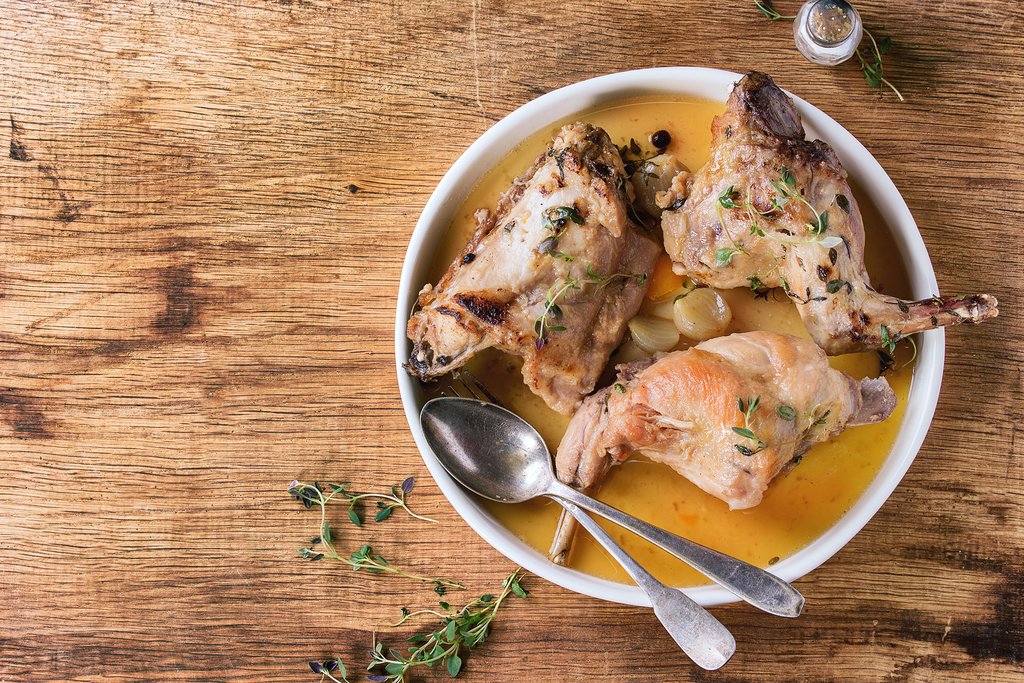
In centuries past, hunting rabbit was a favored pastime of Sicilian aristocrats. While the pursuit may no longer hold the same noble status, some chefs continue to strive to capture the essence of its wild flavor. Presentations of coniglio, or rabbit, range from regal and sophisticated to rustic and comforting. One common preparation involves marinating the rabbit in a sweet and sour sauce, known as agrodolce, made with red vinegar, onions, green olives, and capers. However, perhaps the most decadent topping is the famed chocolate of Modica, an Aztecan recipe introduced by the Spanish during the 16th century. The combination of savory rabbit and rich chocolate is a testament to Sicilian culinary innovation.
Unsurprisingly, rabbit takes center stage at Bianconiglio in San Vito Lo Capo. Named after the White Rabbit in Alice in Wonderland, this restaurant embraces unconventionality, focusing exclusively on meat dishes. Among their offerings are rabbit medallions prepared with the chef’s secret recipe, a dish that promises to tantalize your taste buds. Ristorante Andrea, located in the heart of the UNESCO World Heritage Site Palazzolo Acreide, also claims to prepare rabbit “our way,” suggesting a unique culinary approach.
For a truly unique Sicilian experience, order the maccheroncino at the Michelin-starred Ristorante Coria in Caltagirone. Here, the dish features pasta served with rabbit and tenerumi, the tender leaves of the lanky Sicilian zucchini, known locally as cucuzza. This combination of textures and flavors showcases the versatility of Sicilian cuisine and the creativity of its chefs.
## #7 Couscous with Fish in Trapani: A Taste of the Mediterranean
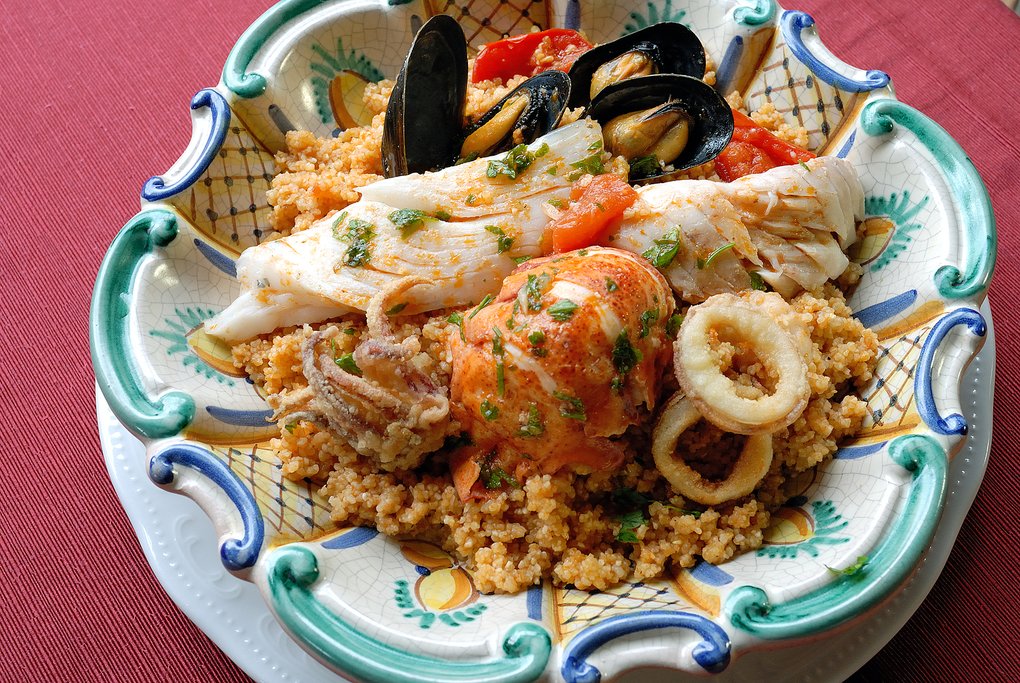
While Morocco may be the first destination that comes to mind when considering the best place to savor couscous, Sicilians hold immense pride in their own version of this beloved dish. Every year, they host a world championship known as Couscous Fest in the western coastal province of Trapani, a testament to their dedication to this culinary tradition.
After exploring the area’s famous salt flats and the pristine pebble beaches of Zingaro Nature Reserve, venture to the festival location, San Vito Lo Capo. Even if your visit doesn’t coincide with the competition, the Arab-Sicilian dish can be found at nearly every trattoria in town, offering a taste of the region’s rich cultural heritage. Furthermore, the churches in San Vito Lo Capo stand as incredible examples of Sicily’s unique Arab-Norman architecture, providing a visual feast to complement the culinary delights.
Unsurprisingly, the favorite way to serve couscous in this coastal Mediterranean region is with a generous heaping of local seafood. Journey to the namesake town of Trapani. Not far from the port where boats depart for the Egadi Islands, you’ll discover Hosteria San Pietro, a no-nonsense restaurant renowned for its authentic Sicilian couscous. Teeming with fresh seafood, shellfish, saffron, and almonds, this dish is a true reflection of the region’s culinary identity.
B-1419

